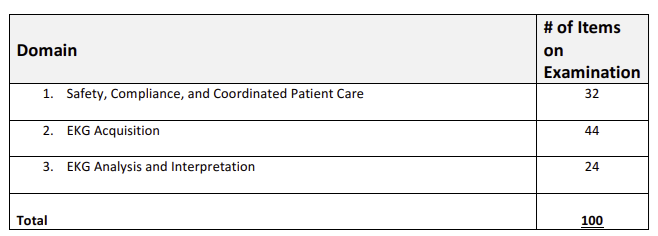Last Updated on March 28, 2025
FREE EKG Practice Test 2025 Official Study Guide PDF] NHA: Try our free EKG 100 multiple-choice review questions and answers. All the EKG Practice Tests are designed based on the NHA EKG certification content. It will help you in nursing, EKG Technician, and ACLS course prep.
FREE NHA EKG Practice Test 2025
If you’re preparing for the NHA (National Healthcareer Association) EKG certification exam, taking practice tests is essential to your study plan. A good EKG practice test will help you identify your strengths and weaknesses and give you an idea of what to expect on exam day.
One great way to access practice tests is by going online. Many nursing certification exam preparation websites offer EKG practice tests in a multiple-choice format that simulates the actual certification exam. These tests typically come in the form of downloadable PDFs that include a variety of questions and answers, as well as EKG strips for you to interpret.
When taking an EKG practice test, it’s essential to approach it as if you were taking the actual certification exam. This means setting aside a specific time to take the test, eliminating all distractions, and timing yourself to simulate exam conditions. Taking the practice test under test conditions will help you become more familiar with the format and pacing of the exam.
EKG Certification
Learning the ECG is a valuable skill for both medical practitioners and non-practitioners. Interpreting ECG readings will help you understand how specific features of a person’s heart can affect him or her. This knowledge will guide appropriate care and prevent undesirable complications.
1. NHA Certified EKG Technician:
The NHA Certified EKG Technician (CET) official test has 100 scored items and 20 pretest items. You must finish the test in 2 hours. The Exam fee is usually around $115–$120.
2. NPS EKG Technician
National Performance Specialists Certified Electrocardiogram Technician (CET) Certification. Applicants need to have completed EKG technician training or have relevant experience. The training should encompass understanding cardiovascular anatomy and physiology, EKG electrode placement, and interpretation of EKG readings. A candidate must complete at least 10 live EKGs to qualify for the national CET certification exam.
The ongoing NPS certification exams consist of 100 four-option, scored multiple-choice items. Candidates have 2 hours to complete the exam, which is administered remotely through the NPS Remote Proctoring system.
- Registration Fee: $200
3. CCI Cardiographic Technician
Cardiovascular Credentialing International (CCI) – Certified Cardiographic Technician (CCT) examination fee is USD 175. The Certified Cardiographic Technician (CCT) exam is a two-hour, computer-based exam that contains 130 questions.

EKG Test Study Guide PDF
The textbooks listed below are intended as recommended resources when preparing for examination. You may have previous or later editions of these or other references available that also present acceptable coverage of the subject matter. Any general text in cardiovascular techniques, evaluation, cardiac patient care, and management may be used. It is not necessary to use all of the texts identified. They are provided as suggestions only. CCI does not endorse or recommend any third-party review course or material.
- 1. Shier, David, Jackie Butler, and Ricki Lewis. Hole’s essentials of human anatomy and physiology. Boston: McGraw-Hill.
- 2. Booth, Kathryn A., and Thomas E. O’Brien. Electrocardiography for healthcare professionals. New York: McGraw-Hill.
- 3. Dubin, Dale. Rapid interpretation of EKG’s: an interactive course. 6th ed. Tampa, Fla.: Cover Pub. Co., 2000.
- 4. Wagner, Galen S., and Strauss, David G. Marriott’s Practical Electrocardiography. Philadelphia: Wolters Kluwer Health/ Lippincott Williams & Wilkins.
Resources
- 150 Practice ECGs: Interpretation and Review [PDF]
- Basic ECG Interpretation Practice Test [PDF]
- https://www.nhanow.com/certification/nha-certifications/certified-ekg-technician-(cet)

